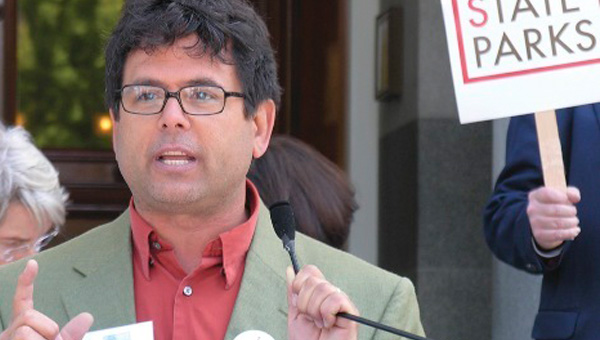Randy Widera, Director of Philanthropy
In 1979, when I first led a group of kids on a nature hike through Big Basin Redwoods State Park, I knew I’d found my place and calling. Since then, I have been so fortunate to work in and around California state parks for the duration of my career. You may know me from California State Parks Foundation, but I’m also a state park docent and volunteer, have led hundreds of field trips to state parks as an environmental educator, and have raised funds for many projects and programs throughout the California state park system.
Through the years, I’ve come to understand the profound role state parks play in the lives of so many people. I’ve also learned that we can’t take our state parks for granted – and that means we must advocate for them.
With Park Advocacy Day right around the corner, I wanted to take a moment to reflect on the critical role that advocacy plays in our work. The state park system was founded because of the advocacy of individuals. Each park has its roots in the action of Californians who shared a vision of protecting and preserving our natural and cultural resources. This year, we’re hosting our 20th annual Park Advocacy Day, and I have been lucky enough to attend every year since the beginning. During these 20 years, we have accomplished a lot: we kept parks open when they were threatened with closure (three times), we helped pass bonds that funded critical deferred maintenance and infrastructure, we protected the rights of volunteers to help support parks, and we prevented parks from toll road development and powerlines… the list goes on.
Central to all the success over the years has been the interconnected actions of a vast network of advocates, partners, volunteers, and members like you who stand up for parks with passion and persistence. By donating, signing petitions, and writing to leaders and legislators, you make California state parks stronger and more resilient.
On those first hikes, I led in Big Basin Redwoods State Park years ago, I taught a lesson to the kids about the “web of life.” Each child represented a different animal or plant in the park, and they would string yarn from one hand to another’s, illustrating how each living thing depended on the other. Soon, each one would have as many connections as they could hold on to, which made a giant web interconnecting everyone. That interconnectedness reminds me of the network we’ve created at California State Parks Foundation. The future of state parks depends on us staying connected and advocating for them, so these incredible places can remain here long into the future.
